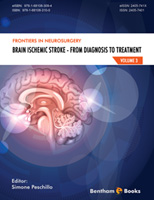Abstract
Acute ischemic stroke secondary to large vessel occlusion (LVO) is a devastating condition resulting in death and disability in a high proportion of patients. Over the last 2 decades, we have witnessed a tremendous progress in the treatment of this disease. In fact, from an observational and mostly supportive care we are now in the era of acute endovascular intervention.
The first step in the right direction was the NIH/NINDS intravenous (IV) tissue plasminogen activator (tPA) trial. The trial introduced the concept of time-sensitive intervention in acute ischemic stroke. Subsequently, the endovascular approach was pioneered as treatment for this condition. However, 3 clinical randomized trials SYNTHESIS Expansion, IMS III and MR RESCUE failed to demonstrate superiority of the endovascular approach over standard IV tPA therapy. There were several drawbacks in these trials including i) not always demonstration of a LVO ii) long time to intervention and iii) most importantly, use of first generation thrombectomy devices. In fact, while these trials were ongoing, retrievable stents in SWIFT and TREVO 1 and 2 showed to be superior to first generation thrombectomy devices.
Using latest generation technology, MR CLEAN, ESCAPE, EXTEND IA, SWIFTPRIME and REVASCAT, 5 multicenter, controlled, randomized, clinical trials showed overwhelming superiority of the endovascular approach over medical management for acute LVO.
Keywords: Ischemic stroke, Randomized clinical trials, SOLITAIRE stent retriever, Thrombectomy.






















